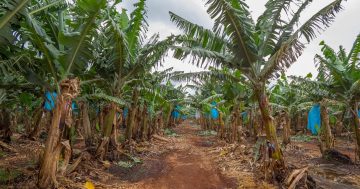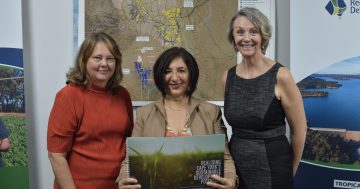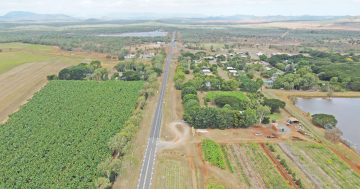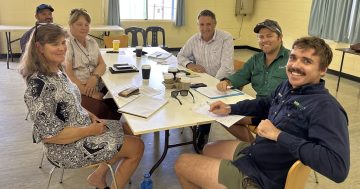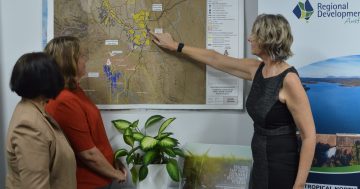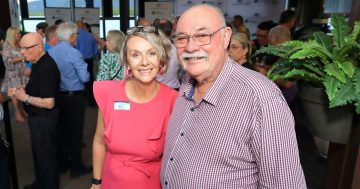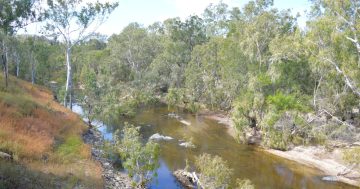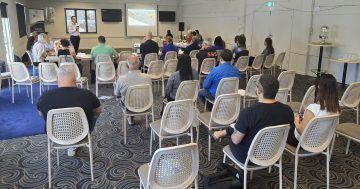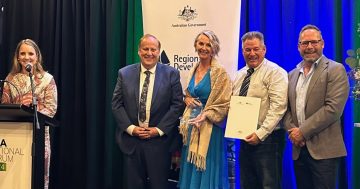
Cook Shire Council Mayor Robyn Holmes, RDA Tropical North chair Professor Hurriyet Babacan and RDA Tropical North chief executive officer Sonja Johnson inspect the Lakeland Irrigation Area Scheme detailed business case, a project editor Lyndon Keane says should be given an immediate funding green light. Photo: Cape York Weekly.
In the world of politics and regional development, grandiose plans are like the proverbial body part in that everyone has one, with some demonstrably more useful than others.
That’s certainly true of the proposed Lakeland Irrigation Area Scheme (LIAS), for which Regional Development Australia (RDA) Tropical North unveiled its detailed business case last week.
Already seven years in the making, the ambitious project will construct a 296-gigalitre dam on the Palmer River to help irrigate an additional 10,050 hectares of land to transform Lakeland into a food bowl and regional economic powerhouse that will punch well above its weight and have flow-on benefits well beyond the Cook Shire local government boundary.
The brains behind the scheme have costed it at $1.6 billion and anticipate it will push somewhere in the vicinity of $500 million into the local economy each year. Even if you work on the assumption the cost estimate is a bit light on – a realistic postulation, given it will be 2031 before it’s operational – the fact it will pay for itself within a handful of years is unheard of with major infrastructure projects.
The rest of the numbers in the business case are just as worthy of attention. Pundits estimate the project will create 2,500 full-time jobs during the construction phase, and over 1,800 when the scheme is operational through increased agricultural production and associated industries. If the vision of the project is fully realised, there’s every chance about 3,000 people could call little old Lakeland home within a decade, a tenfold increase on its current population. For perspective, it’s the equivalent of a single project bumping Weipa’s population north of 40,000.
It’s fair to say our state and federal governments have been reluctant to dive into the dam building game in recent times, ostensibly due to growing pressure from environmental groups and voters who believe having an address west of Indooroopilly constitutes remote living. However, the project will not impact the Great Barrier Reef, as the Palmer River empties in the opposite direction, and the business case estimates only one per cent of outflow into the Gulf of Carpentaria will be affected.
While RDA Tropical North and Cook Shire Council are heralding the benefit of LIAS getting the funding green light, they aren’t alone. Traditional Owners, existing Lakeland primary producers and community advocates all seem to agree the project ticks the big four infrastructure investment boxes: water security, food security, economic development and job creation.
If LIAS lives up to the hype, there’s no reason it can’t be the catalyst to open up international export markets through Cooktown Airport and, if another ambitious plan goes ahead, Weipa as a sea freight hub. These opportunities are, of course, in addition to existing southern markets that can’t get enough of our produce. If you need more justification, having a food bowl in our backyard will create a genuine solution to supply Cape York and Torres Strait residents with fresh fruit and vegetables in a manner the State Government’s 5.2 per cent freight subsidy has fallen well short of achieving.
It feels odd to pen an editorial without mentioning the ongoing battle to seal the Peninsula Developmental Road, so I’m just going to casually suggest developing LIAS will also create an overwhelming economic argument for finally getting stages three and four of the Cape York Region Package funded and delivered.
The scheme needs to be supported and funded with immediacy. It’s that simple. If the state and federal governments are prepared to consider spending $12b on a 37.8-kilometre rail extension on the Sunshine Coast, there is no argument for not whipping out the oversized novelty cheques to finance a legitimate game – and community – changing project for Cape York.


